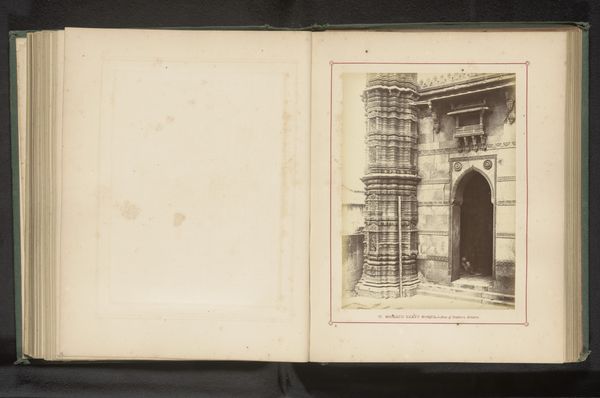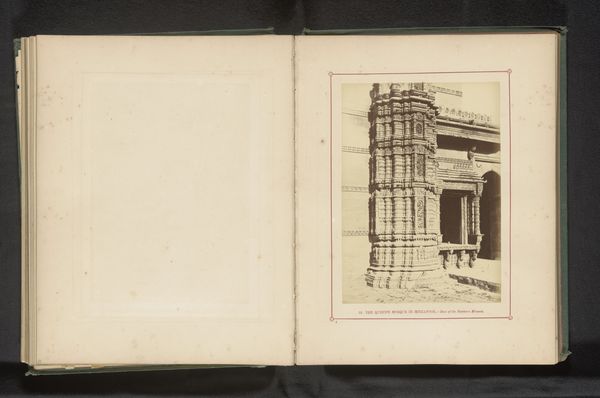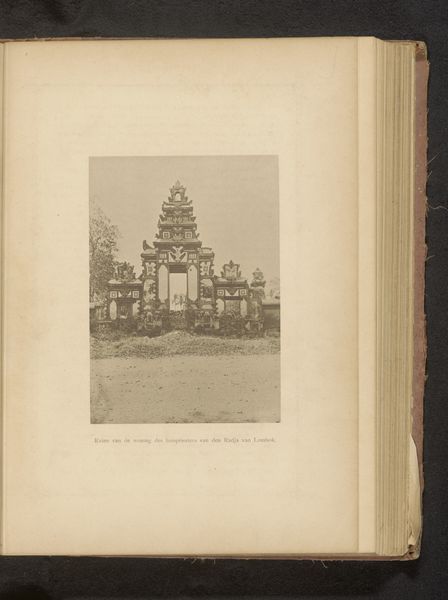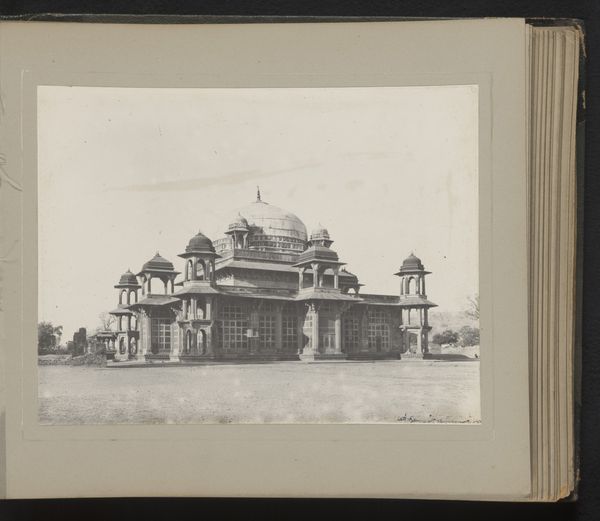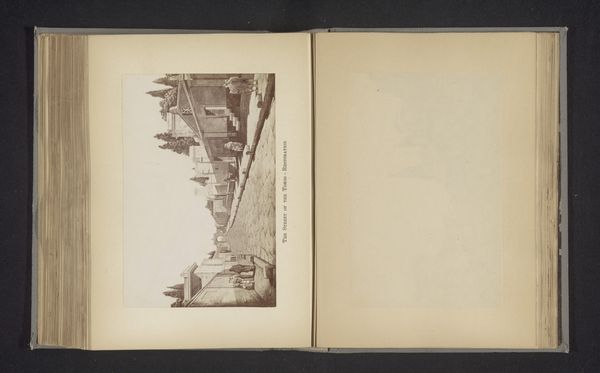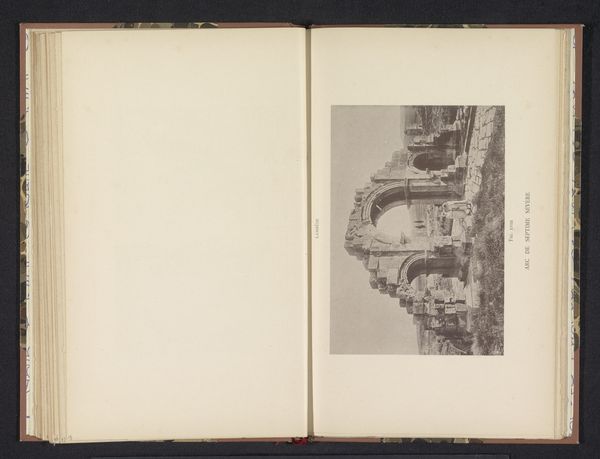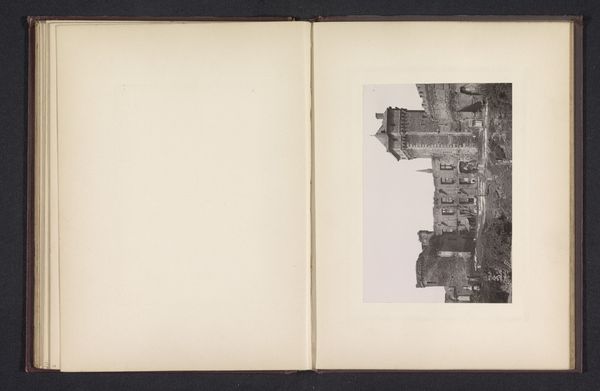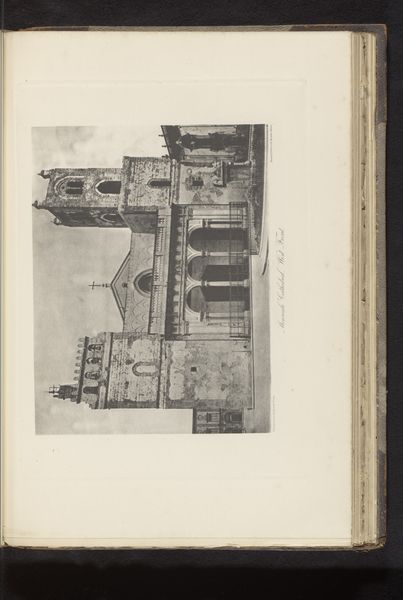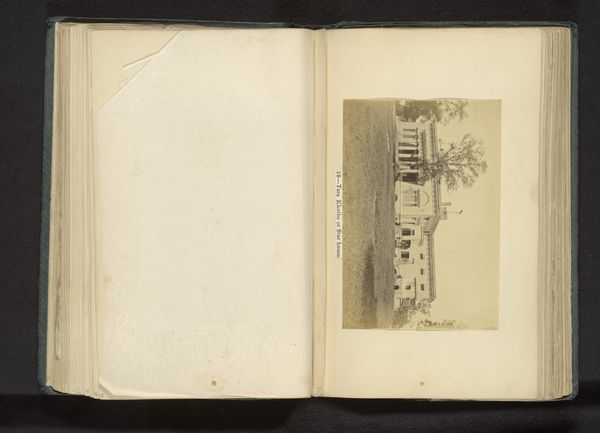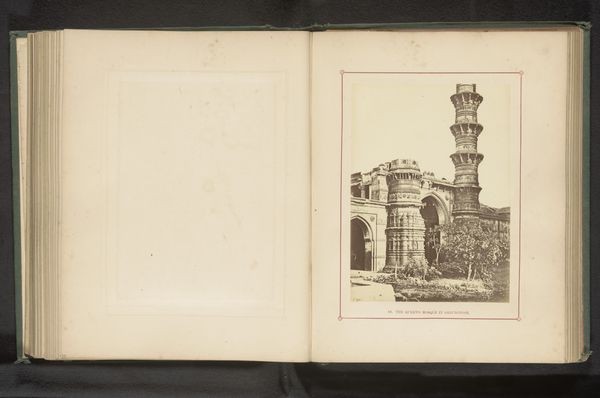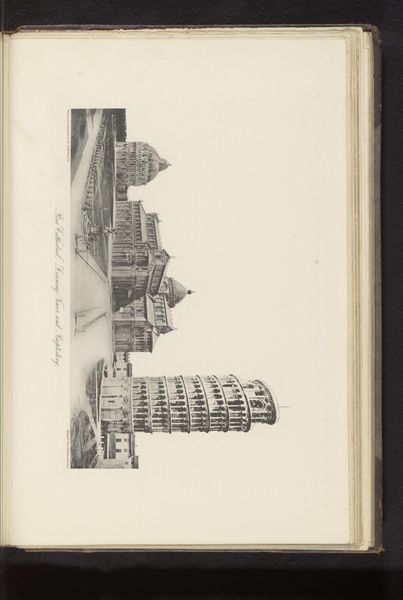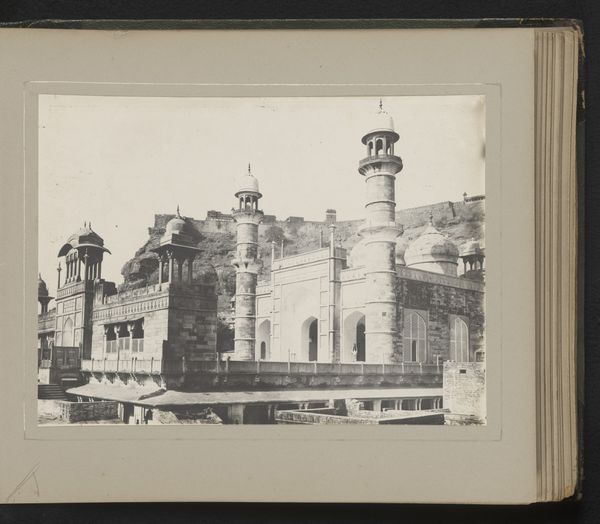
print, photography, albumen-print, architecture
#
aged paper
#
toned paper
#
ink paper printed
# print
#
landscape
#
paper texture
#
photography
#
ancient-mediterranean
#
orientalism
#
albumen-print
#
architecture
Dimensions: height 152 mm, width 208 mm
Copyright: Rijks Museum: Open Domain
Editor: So, here we have “Gezicht op de Sasbahu Tempels,” a photograph from around 1900, attributed to K.H. Mawal. It looks like an albumen print. I’m struck by the way the light creates such a stark contrast, almost flattening the temple structures. What do you see in this piece? Curator: This photograph, while seemingly a straightforward documentation of architecture, is deeply implicated in the colonial gaze and the orientalist project. We must ask ourselves, what purpose did such images serve for the European audience of the time? How did they shape perceptions of the ‘Orient’? Editor: That's an interesting point. I hadn’t considered the colonial context beyond a simple recording of historical sites. So, the way it’s framed… Curator: Exactly. Notice the composition: the temples, grand and imposing, are set against a somewhat barren landscape. Is this an objective view, or does it reinforce a narrative of European progress juxtaposed against a static, timeless 'East'? Also, who was Mawal? Understanding the photographer's positionality is crucial. Was he an Indian photographer working within or against the grain of colonial expectations? Editor: It makes me wonder if he had a choice about framing, or about anything, for that matter. So, looking at the piece now, the flat lighting feels less accidental and more… deliberate. Curator: Precisely! Consider also the potential use of this image as evidence of a ‘dying’ culture, justifying colonial intervention and ‘preservation.’ By exploring photography as a political tool, we can understand its complex role in shaping history. Editor: This completely changes how I view this photograph. It's no longer just an architectural document; it's a complex intersection of power, representation, and history. Curator: Indeed. Examining visual culture critically is the key to unraveling those layers and revealing the often-unseen power dynamics embedded within.
Comments
No comments
Be the first to comment and join the conversation on the ultimate creative platform.
